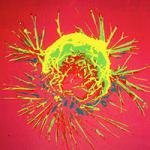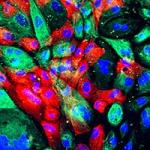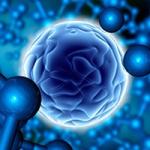
Research Topics
Our laboratory's long-term goal is to understand the fundamentals of centrosome biology and the consequences of their perturbations in human disease.
Centrosomes perform vital cellular processes such as microtubule nucleation, organization of the bipolar mitotic spindle poles during cell division, and cellular signaling. Centrosomes also organize sensory and motile cilia, critically important for development and tissue homeostasis.
Unlike most cellular organelles, which are present in variable shapes and numbers, centrosome architecture and numbers are stringently controlled, and they are present in only two copies in cycling cells. Supernumerary and structurally aberrant centrioles have been found in many types of tumors, and centriolar and ciliary defects are, in addition, an underlying cause of genetic disorders known as ciliopathies. Therefore, understanding the molecular mechanisms that regulate centrosome number, structure, and function is paramount for understanding centrosome and cilia-related diseases.
We seek to develop an in-depth understanding of the mechanisms that regulate centriole and centrosome homeostasis and how are these regulatory mechanisms lost in human pathologies. We aim to understand how various cell cycle regulators affect centrosome biogenesis and synchronize centrosome assembly with other cell cycle events. Finally, we seek to unravel centrosomal molecular architecture to understand how the organization of centrosomal proteins relates to centrosome functions. We use a multipronged experimental approach combining molecular biology, biochemistry, and genetics, with various cutting-edge microscopy approaches ranging from live-cell and super-resolution microscopy, expansion microscopy to transmission electron microscopy, and correlative light and electron microscopy.
Biography
Dr. Jadranka Loncarek joined the Laboratory of Protein Dynamics and Signaling as an NIH Earl Stadtman Tenure Track Investigator. She obtained her Ph.D. from the Faculty of Sciences at Zagreb University, Croatia, in cell and molecular biology. She completed her postdoctoral training in the laboratory of Dr. Alexey Khodjakov at Wadsworth Center, Albany, New York, where she studied the mechanisms of centriole duplication and mitotic spindle formation. Her current research focuses on elucidating the molecular mechanism of centrosome biogenesis and their function, with particular attention on numerical control of centrosome formation in non-transformed and cancerous human cells. She received tenure from NIH in 2020.
Related Scientific Focus Areas



Molecular Biology and Biochemistry
View additional Principal Investigators in Molecular Biology and Biochemistry
This page was last updated on Wednesday, January 22, 2025